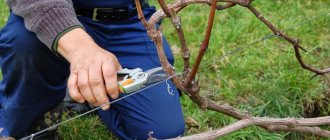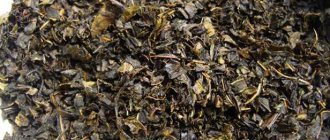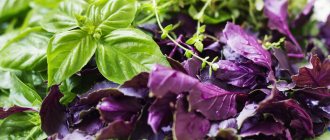How to Preserve Fresh Grapes for Several Days
In stores, grapes are usually sold in special packages with holes. With their help, the berries interact with oxygen, which is why the fresh taste lasts longer. If you buy grapes at the market or grow them yourself, the best place to store them for 2–5 days is the refrigerator. However, here you need to use prepared containers.
Place the fruit in a plastic bag, but do not tie it, just cover it. The best place would be a chamber for vegetables, but only so that there is not a single product nearby, otherwise the grapes will quickly absorb foreign odors. Leave it unwashed because too much water will cause it to rot faster. Also, do not forget to remove limp and rotten berries from the bunch.
Varieties for long-term storage
Grape varieties have different storage periods, but only if certain conditions are met. Let's look at the strongest varieties that can stay fresh for 3-6 months:
- Winter Catalon. This grape is able to retain its qualities for up to 5 months. The berries on the stems hold tightly, but in February - March the shell becomes hard and darkens. Winter catalon tastes bitter and watery.
- Asma. The variety has a shelf life of up to 5 months, and only if it is sufficiently ripe. In the last month of winter, it begins to quickly deteriorate and change color. The shell becomes hard, but a lot of liquid collects inside the berries. It is recommended to store Asma separately from food, as it quickly absorbs foreign odors.
- Senso. One of the strongest varieties that can last until spring. The grapes are resistant to fungal growths and do not change their taste until March. The berries do not change color and stay firmly on the bunch.
- Karaburnu. The maximum shelf life is 5 months, but after 90 days it becomes vulnerable to fungus. Despite the maximum shelf life, caraburnu is quite picky.
Dark varieties stand out for their long shelf life, but they must be fully ripe.
Grape varieties for storage
The best varieties, which are distinguished by the presentable appearance of the fruit and excellent keeping quality:
- In memory of Negrul. Grapes of medium ripening, with a high degree of frost resistance, increased immunity. The clusters are cylindrical in shape, their weight varies between 400-700 g. The berries are painted black and last for 130 days.
- Original. There are three types of this variety; the berries are white, pink and black. The plant is frost-resistant down to -21 °C. The weight of the bunch is 400-600 g. The productivity of the bush is about 100 kg. The shelf life of the crop is up to 130 days.
- Anniversary of the Crane. Late-ripening grapes form large clusters, their weight is 400-500 g, and there are specimens up to 1.4 kg. Frost resistance down to -25 °C. The plant is powerful and hardy. The berries can last up to 130 days.
- Nistru. The medium-sized bush has increased immunity to major diseases; shelter is not required for the winter; the fruits can be transported over long distances. The weight of the bunches is 700-800 g, but with proper agricultural technology and favorable growing conditions they can reach 3 kg. The harvest is not afraid of transportation; the shelf life at appropriate temperatures is almost 140 days.
Fruits reach the shelves after they have been treated with gas, which makes them useless and tasteless. Vitamins are formed in them only when interacting with sunlight.
Features of collection and preparation for storage
Harvesting grapes is a rather complex and labor-intensive process. The storage period will depend on the quality of processing. Before cutting, carefully inspect the bunch to ensure it is not green or dry. If the berries are covered with wax, and the ridge is light green and flexible, then the grapes are considered ripe and can be picked.
The bunches should be placed in boxes with the ridge up; the berries should not protrude above the level of the container. As soon as the grapes are formed, immediately lower them into the cellar, as they quickly lose their elastic shape and rot.
Winter storage methods
There are many ways to store grapes in winter. They all differ in conditions and level of training. Let's look at the most popular storage methods, their advantages and disadvantages.
In the cellar
At the beginning of the procedure, prepare the room. Clear away any debris and treat the walls with an antibacterial agent. The most common and simplest method is whitewashing. The cellar must be constantly ventilated, since high humidity will lead to the appearance of fungus.
Using water containers
The use of the method is most relevant for grapes with thin and weak skins. The bunch needs to be cut along with the vine, so that shoots remain on it. Then we put the main branch in the water, and leave the vine in limbo. Alternatively, use a bottle. Place the vine in a bottle with liquid and hang the clusters in a position closer to horizontal.
Hanging
Take a thin wire or long cord and tie the bunches tightly, but without breaking. Leave some space between the berries so they don't touch each other.
This storage method will require ample space, but the hanging grapes will take their natural shape and will last for up to three months. Place a tarp underneath to catch any loose berries. Change the lining regularly, otherwise the vinegar midge will start and spread throughout the grapes.
Application of boxes and barrels
There are several options for storing grapes in containers:
- We put sawdust on the bottom of the box, then put the grapes in one layer so that they do not touch each other. Repeat the procedure until completely filled. Do not use tall containers, as the heavy weight will crush the berries. Pine sawdust effectively blocks the appearance of fungus and bacteria, but because of it, the taste of the grapes changes. The best option is poplar wood or cork chips.
- Place dried herbs or paper in low boxes, then place the grapes in a single layer. The maximum storage period using this method does not exceed two months, and the berries must be regularly monitored, as fungus may develop.
Place grapes in boxes only with whole and firm berries. This will save it from massive rotting.
On shelves
The optimal height between shelves is at least 25 cm. Before storing, clean them of debris and dry them from moisture. You can use cellophane or paper as a backing. Alternatively, the grapes are sprinkled with straw ash, which blocks the growth of bacteria.
Do not store grapes next to vegetables, as they will absorb not only moisture, but also aroma.
Ridge storage
There are two options:
- On dry ridges. Cut the bunch of grapes together with the vine so that it is 7–10 cm on each side. Then pull the wire or cord through and make loops of appropriate sizes. Hang the cut bunch on them so that it does not touch the next one. The vine will transfer the remaining moisture to the berries, thereby slowing down the process of rapid ripening.
- On green ridges. A more labor-intensive process, but the most effective. Try to cut the grapes together with the green, young vine. Then prepare a container of water; glass bottles are often used. Gently insert the green vine into the water bottle and leave the bunch outside to hang naturally. This way, the grapes will not only last a long time, but will also remain fresh. Check your berries regularly for spoilage.
Storage 1-2 months
If you do not have the goal of “aging” the grapes until spring, make preparations for a month or two. This is the simplest storage option - in order for the berries to live normally for this period, they should be packed tightly together. They do this in trays and on shelves. Shelves can be covered with straw or corrugated cardboard.
Make sure that the crop is not affected by mold. It may first appear on individual berries, and then affects the entire bunch. Fruits can also be damaged during storage on a trellis, or if the bunch is handled improperly during its preparation for storage. The berries should not be separated from the pad - otherwise the seed will be exposed and the juice will flow out. In such places of damage, under the right conditions, mold almost always forms. But it would be better to leave purine on the fruits - a waxy coating protects the grapes from rotting, cracking, and pests. Find out about the Monarch grape variety here.
Before storing, it is recommended to remove underdeveloped and/or dry fruits from the bunch.
When harvesting berries, you need to use a towel or a clean soft rag - with constant contact with the skin of your hands, the purine is erased.
The later you store the berries, the better. Choose rooms that are dry, dark, with thick walls, and well ventilated. Ideally, the storage facility should be pre-whitened, fumigated with sulfur, and then cooled. When it rains, you should not ventilate it; at other times, you can open the doors at night.
Storing grapes in the refrigerator
If you want to preserve the berries for the maximum period, then use the refrigerator. If all conditions are met, the grapes will retain their beneficial properties for more than six months. You can store it either in the freezer or in the general compartment, but the result will be different. If you do not want to freeze it, then place it in the vegetable compartment, having first cleared the bunch of green and overripe berries.
Freezing in the freezer
The freezer helps store grapes for up to one year, but to do this you need to perform several sequential steps:
- carefully inspect the grapes and select only ripe and elastic berries;
- tear them off the bunch and put them in a container;
- rinse with running water;
- place in the refrigerator for 2–3 hours to cool;
- Place the berries in a container or plastic bag and place in the freezer.
If you want to freeze grapes in small bunches, then first hang dry them.
How to defrost grapes correctly
To ensure that the berries retain their beneficial properties, move them from the freezer to the main compartment of the refrigerator for 18–20 hours. To defrost the grapes quickly, fill them with water at room temperature. It is advisable to consume the berries within an hour, as they will then lose their properties and spoil.
Do not defrost berries in the microwave under any circumstances, as almost all the beneficial substances will disappear immediately. To make compote or jam, you don’t need to defrost the grapes at all.
Best friend is the refrigerator
A cellar and other premises of this kind (basement, glassed-in balcony, summer kitchen, etc.) are not the best place for long-term storage of grapes. It is difficult to maintain constant temperature and humidity conditions in them and it is not always possible to effectively destroy pests.
Freezing grapes
Another good way to “extend the life” of tasty and healthy berries. The main thing is not to expose them to low temperatures again. Dark grape varieties last longer than light ones, although any variety of this crop is suitable for freezing.
- The bunches are cleaned of debris and damaged berries, then thoroughly washed under running water and dried.
- Place on a tray and keep in the refrigerator for 2 hours.
- Then place in the freezer for 30 minutes. Take it out, pack it in portions into containers and freeze it completely.
You can use not only whole brushes, but also individual berries.
This is much more convenient when preparing desserts. Light varieties are frozen in sweet syrup: for 1 glass of sugar - 2 glasses of water (it is necessary to adhere to the specified proportion). When defrosting, place the berries in cool water for about an hour. The fruits should be eaten immediately. However, it is better to first keep the grapes on the bottom shelf of the refrigerator for 10 to 18 hours. Defrosting will be smoother, making the taste of the product brighter and richer.
Grapes are a wonderful gift of nature that can and should be consumed not only in season. If stored properly at home, it is quite possible to serve fragrant bunches to the New Year's table, or even to please loved ones or guests in early spring. Of course, you will have to put in a lot of effort, but the result is definitely worth it!
Long-term storage conditions
If you want to preserve grapes for a long time, then you need to choose the appropriate variety and prepare it correctly. If all the rules are followed, the berries will retain their fresh taste and beneficial properties for up to 1 year.
Selection of keeping varieties
Late ripening grapes last the longest. It stands out for its elasticity and waxy coating. Dark varieties do not lose their elasticity for a long time and retain their presentation. Also, the shelf life is affected by the sugar content of the berry; the more sugar, the longer the grapes are stored.
Dark spots may appear on white berries. They do not indicate any disease, but the presentation deteriorates. This can be corrected by fumigation with sulfurous smoke.
Preparing grapes in the summer
If you have chosen the right variety for long-term storage, this does not mean that the grapes will retain their properties for a long time. You need to take care of the berries since summer. Water the roots regularly until harvest. Use preventive measures using fertilizers or special preparations, even if the fruits appear healthy.
Proper harvesting
The grapes must ripen as long as possible since green berries will not last even one week. Pick fruits only during the daytime, as dew collects on the berries in the morning and evening. It prevents the preservation of the elasticity of the shell and nutrients.
Use sharp pruning shears and rubber gloves. Always hold onto the bunch and try not to touch the berries, as for a longer shelf life it is necessary that a wax coating remain on the berries.
Preparing fruit bunches
Carefully inspect the fruit for damage or rotting. Use tweezers or a clamp so that small branches can be pulled back and inspected. One damaged berry can infect the entire bunch. The main criterion for long-term storage is the absence of moisture, so if wet berries are found on the bunch, check them for elasticity and dry them.
Preparing the premises
The storage area must be dry and clean. To prevent the grapes from disappearing and losing their beneficial properties, keep the temperature within 0-+5 degrees. Cellars or basements usually have high humidity, so place containers with charcoal or lime around the perimeter. Place the branches in a dark place, as light destroys acids and promotes rapid decay. If the fruits will be stored in clusters, then separate them from each other. Place grapes away from other fruits and vegetables, as they quickly absorb odors.
Is it possible to store grapes at home for a long time?
No matter how long the wait, there comes a time when all the grapes have to be removed from the vine. Of course, it is possible to immediately process it into juices, wine and canning. But an even greater desire arises to enjoy fresh berries filled with multifaceted aroma. Preserving grapes at home for several months is quite possible if you take into account important factors:
Only mid- and late-ripening varieties are suitable for storing grapes
- the crop variety is selected to be mid- or late-ripening with loose clusters;
- the berry should have dense pulp and thick skin;
- when growing grapes yourself, pay attention to the rules of agricultural technology , they affect the safety of the fruit;
- Harvests should only be harvested when they are ripe (not green or overripe), and work should be carried out in dry, sunny weather;
- when removing bunches, you should try not to damage the wax coating , it promotes long-term storage (it is recommended to use rubber gloves for this);
- Before storing, damaged or spoiled grapes should be sorted
- to wash the assembled brushes ; such a procedure only accelerates the deterioration of the workpiece.
How to Preserve a Grapevine Until Spring
The main enemy of the grapevine in winter is cold, since the fruit spends a lot of energy to maintain its vital functions. You can improve his immunity with autumn catarrh. To do this, dig a trench around the base, up to 20 cm deep, and cut off small roots growing at the same level as the base. Then we create a solution with water and copper sulfate in a 2x1 ratio and pour the resulting mixture over the sections. After completing the procedure, fill the ditch with dry sand.
To preserve the vine until spring, water it regularly with warm water from the end of November until the onset of frost.
Grapes are a rather sensitive fruit, so to preserve them you must strictly follow the instructions, otherwise within a few days they may become covered with a fungal coating and lose their properties.











